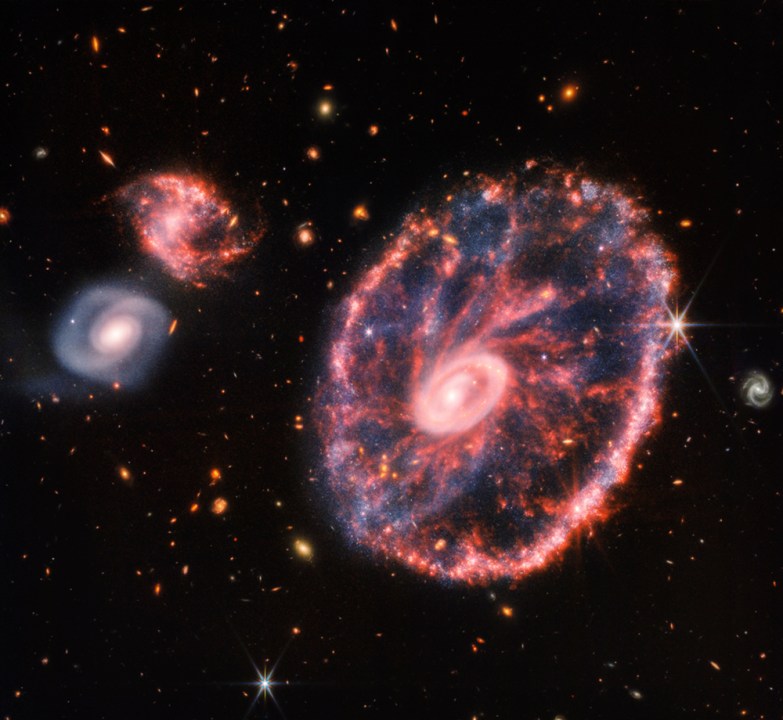There’s a new photo from the James Webb telescope: Here’s when we can expect more
(NEXSTAR) — Last month, NASA’s $10 billion James Webb Telescope released its first batch of images that went deeper into the cosmos than humanity has ever seen. On Tuesday, NASA shared a new image Webb captured of “stellar gymnastics in the Cartwheel Galaxy.”
Webb, the world’s largest and most powerful space telescope, left Earth in December and reached its lookout point 1 million miles away in January. After a lengthy process of aligning mirrors, ensuring the infrared detectors were cold enough to operate, and calibrating other instruments, Webb began peering into the depths of space.
In Webb’s latest photo, seen below, NASA says we have “a new view of how the Cartwheel Galaxy has changed over billions of years.”
“Its appearance, much like that of the wheel of a wagon, is the result of an intense event – a high-speed collision between a large spiral galaxy and a smaller galaxy not visible in this image,” NASA explains.
This image — a composite from two of Webb’s instruments — shows the Cartwheel, right, alongside two smaller galaxies with a backdrop of even more galaxies.

Cartwheel’s inner core is comprised of “a tremendous amount of hot dust,” including some massive, but young, star clusters. The outer ring, NASA explains, has been expanding for 440 million years. As it grows, it hits surrounding gas, sparking new star formation. Cartwheel is in a transitory stage and is expected to keep transforming, according to NASA.
The Hubble Space Telescope, Webb’s predecessor, has looked at the Cartwheel before, but the amount of dust around it kept us from getting a sharper view.
Webb is equipped with a Near-Infrared Camera, which can see wavelengths of light that reveal even more stars, especially younger ones. The telescope also has a Mid-Infrared Instrument, allowing it to see areas in the Cartwheel Galaxy rich in hydrocarbons and other chemical compounds. This helped Webb spot the wagon wheel spokes seen in the galaxy above — regions Hubble could see but not as clearly.
If you can’t get enough of Webb’s images, have no fear — more images will be shared in the coming weeks. NASA says its telescope “has a packed schedule of science programs looking at all kinds of cosmic phenomena, like planets, stars, galaxies, black holes, and more.”
You can also find out what Webb is scheduled to look at. Each week, the Space Telescope Science Institute shares Webb’s schedule, which can be found here. Among Webb’s targets this week are Ganymede, a Jupiter moon and the largest in our solar system; Cassiopeia A, the remnant of a massive star that exploded hundreds of years ago; and Jupiter’s main ring.
A full gallery of Webb’s images can be seen here. Future images will also be posted in the gallery, NASA says.
The Associated Press contributed to this report.
Copyright 2024 Nexstar Media Inc. All rights reserved. This material may not be published, broadcast, rewritten, or redistributed..











